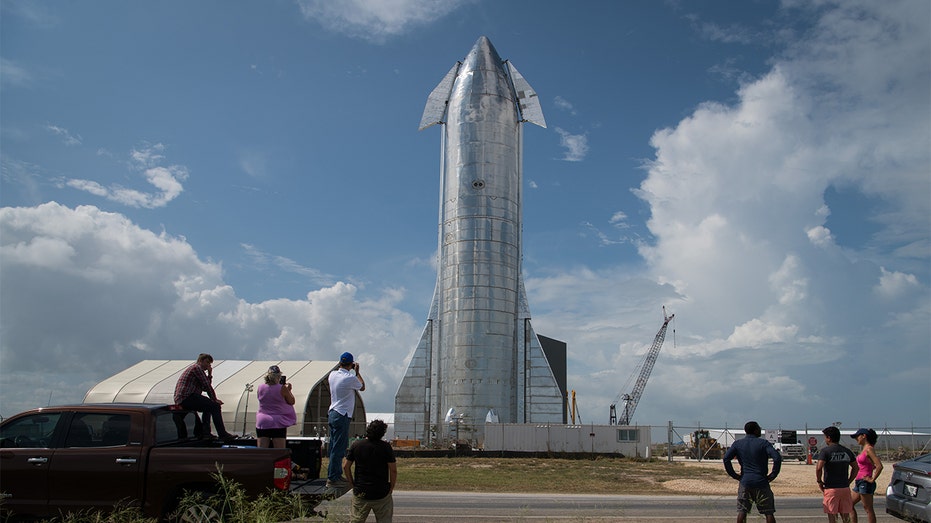SpaceX, FAA in 'close contact' following Starship rocket booster fire
The incident comes as SpaceX is preparing for Starship's first unmanned orbital test flight
Is there other intelligent life in outer space?
Theoretical physics professor Dr. Michio Kaku reacts to NASA's Webb telescope delivering images of galaxies from 138 billion years ago on 'Cavuto: Coast to Coast.
The Federal Aviation Administration is in ‘close contact’ with SpaceX as the aerospace giant assesses the impact of a fire that occurred during a ground test of Starship's Super Heavy rocket booster on Monday.
"The FAA is in close contact with SpaceX as the company looks into the fire that occurred as part of its Super Heavy booster rocket development," the agency told FOX Business in a statement. "The law limits the FAA’s safety oversight to protecting the public during scheduled launch and reentry operations. Yesterday’s event does not fall under the agency’s jurisdiction."
Footage of the unexpected fire was captured during a livestream from NASA Spaceflight. SpaceX founder Elon Musk said in a reply to the video on Twitter that the explosion was "actually not good" and that the company's team was assessing the damage.
Musk confirmed late Monday evening that the fire was related to Super Heavy's Raptor engine spin start test.
"Going forward, we won't do a spin start test with all 33 engines at once," Musk said.
He added in a separate tweet that the base of Starship appeared to be ok and that the launch pad was being shut down for the remainder of the evening for safety.
"Will know more in the morning," he said.
SPACEX'S STARLINK TO CHARGE $5,000 PER MONTH FOR SERVICE ON BOATS
The incident comes as SpaceX is gearing up for Starship's first unmanned orbital test flight. Starship is designed to carry crew and cargo to Earth orbit, the Moon, Mars and beyond.

Space enthusiasts look at a prototype of SpaceX's Starship spacecraft at the company's Texas launch facility on September 28, 2019, in Boca Chica near Brownsville, Texas. (Photo by Loren Elliott/Getty Images)
According to a filing from the Federal Communications Commission, the test flight will originate from SpaceX's Starbase launch site in Texas.
During the flight, the booster stage will separate and perform a partial return, landing in the Gulf of Mexico or returning to Starbase to be caught by the launch tower. The orbital Starship spacecraft will continue on its path to an altitude of approximately 250 kilometers before performing a powered, targeted landing in the Pacific Ocean.
SpaceX intends to mount its Starlink satellite terminals on the Super Heavy booster and orbital Starship during the test flight and use the terminals to communicate with the satellite constellation.
CLICK HERE TO READ MORE ON FOX BUSINESS
Following the conclusion of the FAA's environmental review in June, SpaceX was ordered to take more than 75 actions to mitigate Starbase and Starship's impacts to fish, wildlife and plants before carrying out orbital launches.
Musk previously said that Starship would be ready to fly in July, with plans for a second Starship stack to be ready by August and then monthly thereafter. However, it is currently unclear how Monday's incident will impact that timeline.
In late 2020 and early 2021, SpaceX lost four Starship prototypes in a series of high-altitude test launches when the return landing attempts ended in explosions. The Starship prototype made a safe touchdown in May 2021.
Reuters contributed to this report.





















